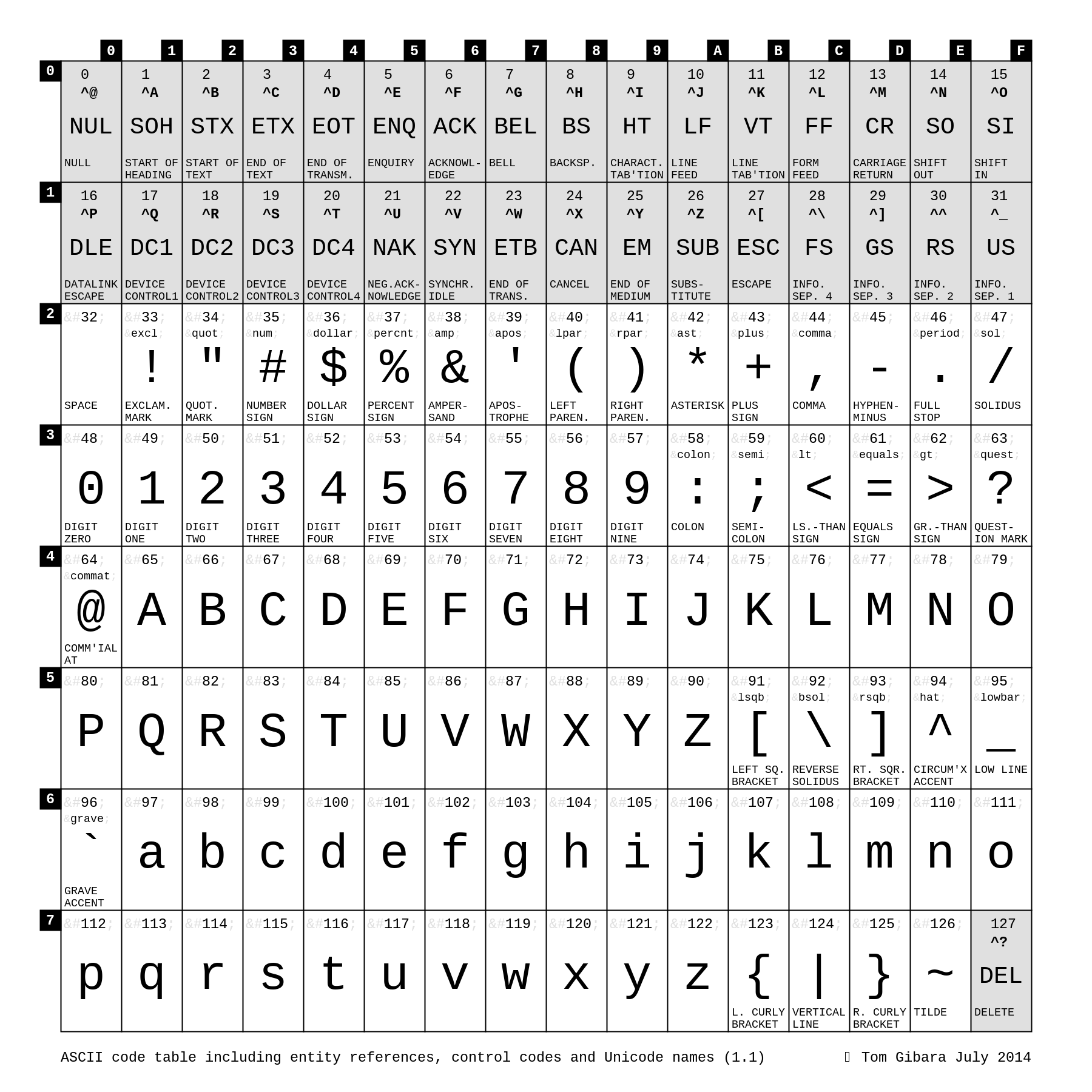Hey everyone! Today, I want to talk about something that every programmer, computer science enthusiast, or anyone who works with computers needs to know about - ASCII tables. If you have ever wondered what those weird symbols in your code or on your keyboard mean, an ASCII table is the key to unlocking that mystery.
An ASCII table at your fingertips
 First, let’s start with the basics. ASCII stands for American Standard Code for Information Interchange. It’s a character encoding standard that assigns unique numbers to each character, including letters, numbers, punctuation marks, and control characters. An ASCII table is a visual representation of these characters and their corresponding ASCII codes.
First, let’s start with the basics. ASCII stands for American Standard Code for Information Interchange. It’s a character encoding standard that assigns unique numbers to each character, including letters, numbers, punctuation marks, and control characters. An ASCII table is a visual representation of these characters and their corresponding ASCII codes.
So, how can an ASCII table be useful to you? Well, imagine you are writing code and you need to insert a specific character or symbol, like the degree sign (°) or a copyright symbol (©). Instead of searching online or trying out different combinations of keyboard shortcuts, you can simply refer to an ASCII table to find the ASCII code for that character and incorporate it into your code.
ASCII tables for every need
Now, let’s take a look at some different ASCII tables available online. One popular ASCII table is hosted on GitHub by tomgibara. It’s called “ascii-table” and it provides a comprehensive table of ASCII codes and corresponding characters. You can find the table here<\/a>.
Another commonly referenced ASCII table can be found on a blog called “Most Commonly Asked Programs In ‘C’ & ‘C++’ Language.” It provides a simple yet informative table that can be helpful for programmers using these languages. You can check it out here<\/a>.
If you prefer a more visually appealing ASCII table, you might like the one available on the website “infocenter.gr.” It has a colorful design and is easy to navigate. You can find it here<\/a>.
If you are interested in a printable version of an ASCII table, there are several options available as well. One such table can be found on a blog called “Coding Tips.” It provides a concise and printable version of the ASCII table, which can be handy to have on your desk. You can find it [here<\/a>.<\/p> For those who want to explore beyond the basic ASCII characters, there is also an extended ASCII table available on the same blog. It includes additional characters like accented letters and special symbols. You can find it [here<\/a>.<\/p> These are just a few examples of the wide variety of ASCII tables available. Depending on your specific need, you can choose the one that suits you best. Whether you are a beginner learning the basics or an experienced programmer, having an ASCII table at your fingertips can save you time and make your coding journey a lot smoother.
Final thoughts -————-
As we wrap up our discussion on the wonders of ASCII tables, I hope you now have a deeper understanding of their importance in the world of computing. These tables are incredibly useful tools for programmers and anyone working with computers. They serve as a reference guide to deciphering and utilizing those mysterious symbols that we encounter every day.
So, the next time you find yourself wondering what a particular character means or need to incorporate a special symbol into your code, remember to consult an ASCII table. It will be your trusty companion on your coding adventures!](https://2.bp.blogspot.com/-mpFUBiEucNY/TtfP0BvpwGI/AAAAAAAAACE/A7azG_Ct2vg/s1600/extended_ascii.jpg)](https://4.bp.blogspot.com/-WZiSyFpZSMA/TtfPpWiQEGI/AAAAAAAAAB8/Ii53x4A5lsE/s1600/printable_ascii.jpg)